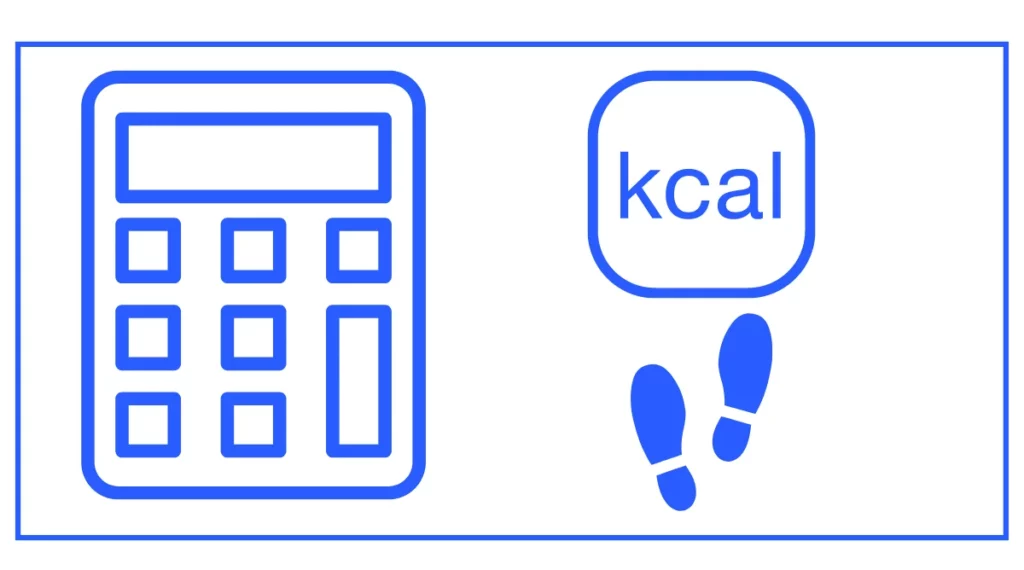Steps To Calories Calculator
Calories burned: 0 kcal
Calories burned per hour: 0 kcal/hr
Do you want to calculate how many calories you burned by walking or running?
This steps to calories calculator helps you find the number of calories burnt in Kcal and the burning rate per hour.
All you need to enter is your weight in kg, height in cm, the number of steps, and speed.
That was easy. Right?

You might find the Steps To Miles and marathon calculators useful.
How the Steps to Calories Calculator Works?
The steps to calories calculator uses a combination of factors to estimate the calories you burn while walking. These factors include:
- Your body weight
- Your height
- The number of steps you take
- Your walking speed
By considering these variables, the calculator can provide a more accurate estimation of your calorie burn. Let’s dive deeper into how each factor influences the calculation.
Body Weight and Calorie Burn
Your body weight plays a significant role in determining how many calories you burn per step. Generally, individuals with higher body weight tend to burn more calories during physical activities. This is because it requires more energy to move a larger mass.
Height and Stride Length
Your height affects your stride length, which in turn impacts the distance you cover with each step. Taller individuals typically have longer strides, meaning they cover more distance with the same number of steps compared to shorter individuals. This can result in a higher calorie burn for the same step count.
Number of Steps
The total number of steps you take directly correlates with the amount of calories burned. More steps mean more movement and, consequently, more energy expenditure.
Walking Speed
The intensity of your walking, represented by your speed, significantly affects calorie burn. Walking at a faster pace increases your energy expenditure and results in more calories burned per step.
Understanding MET Values
To calculate the calories burned, our steps to calories calculator uses MET (Metabolic Equivalent of Task) values. MET is a measure of the energy cost of physical activities. One MET is defined as the energy expenditure while sitting quietly, which is approximately 3.5 ml of oxygen consumed per kilogram of body weight per minute.
Different walking speeds correspond to different MET values:
- Slow walking (2 miles/hour): 2.8 MET
- Average walking (3 miles/hour): 3.5 MET
- Fast walking (4 miles/hour): 5 MET
The calculator uses these MET values to estimate the calories you burn based on your walking speed.
How to Use the Steps to Calories Calculator?
Using our steps to calories calculator is simple and straightforward. Follow these steps to get an estimate of your calorie burn:
- Enter your weight in kilograms.
- Input your height in centimeters.
- Specify the number of steps you’ve taken.
- Select your walking speed (slow, average, or fast).
- Click the “Calculate” button.
The calculator will then display the estimated number of calories burned based on the information you provided.
Interpreting the Results
After using the steps to calories calculator, you’ll see two main results:
- Calories burned: This shows the total number of calories burned for the given number of steps.
- Calories burned per hour: This indicates how many calories you would burn if you maintained the same walking pace for an hour.
These results can help you understand your energy expenditure and plan your physical activities accordingly.
Benefits of Tracking Steps and Calories
Using a steps to calories calculator can offer several benefits:
- Increased awareness: By knowing how many calories you burn with each step, you become more aware of your daily energy expenditure.
- Goal setting: You can set realistic fitness goals based on the number of steps or calories you want to burn.
- Motivation: Seeing the calories burned can motivate you to increase your daily activity levels.
- Weight management: Understanding your calorie burn can help you balance your energy intake and expenditure for effective weight management.
- Activity planning: You can plan your walking routine to achieve specific calorie burn targets.
Factors Affecting Calorie Burn While Walking
While the steps to calories calculator provides a good estimate, it’s important to note that several factors can influence your actual calorie burn:
- Terrain: Walking uphill or on uneven surfaces can increase calorie burn compared to walking on flat ground.
- Weather conditions: Walking in extreme temperatures or against strong winds can affect energy expenditure.
- Fitness level: As you become more fit, your body may become more efficient, potentially burning fewer calories for the same activity.
- Age: Metabolism tends to slow down with age, which can affect calorie burn.
- Body composition: Having more muscle mass can increase your overall calorie burn.
Tips for Increasing Your Calorie Burn While Walking
If you’re looking to burn more calories during your walks, consider these strategies:
- Increase your speed: Walking faster will burn more calories per step.
- Add inclines: Walking uphill or on a treadmill with an incline will increase the intensity and calorie burn.
- Use hand weights: Carrying light hand weights while walking can boost your calorie burn.
- Try interval training: Alternate between periods of fast walking and slower recovery periods.
- Extend your walking time: The longer you walk, the more calories you’ll burn.
Combining Walking with Other Activities
While walking is an excellent low-impact exercise, combining it with other activities can further enhance your overall fitness and calorie burn. Consider incorporating these activities into your routine:
- Strength training: Building muscle can increase your resting metabolic rate, helping you burn more calories even when you’re not walking.
- Swimming: This low-impact activity provides a full-body workout and can be a great complement to walking.
- Cycling: Biking can help improve your cardiovascular fitness and work different muscle groups.
- Yoga: Practicing yoga can improve flexibility and core strength, which can enhance your walking posture and efficiency.
Limitations of the Steps to Calories Calculator
While our steps to calories calculator provides a useful estimate, it’s important to understand its limitations:
- Individual variations: The calculator uses average values and may not account for individual differences in metabolism or body composition.
- Accuracy of step count: The accuracy of the calculation depends on the accuracy of your step count.
- Simplified calculations: The calculator uses simplified formulas and may not capture all the nuances of energy expenditure during walking.
- External factors: The calculator doesn’t account for factors like terrain, weather, or your fitness level.





